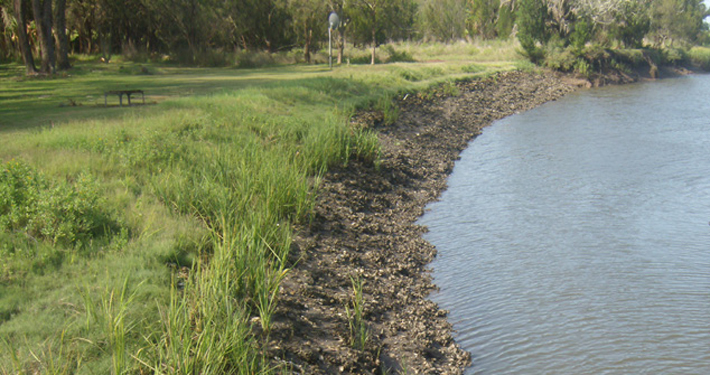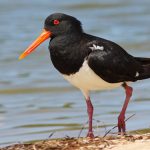Living Shorelines: A Better Approach to Fighting Erosion
The twice-daily tides in Georgia, often reaching upwards of 8 feet in amplitude, are an ecologically important and powerful driving force in and along the edges of our salt marshes. For generations, coastal Georgians have attempted to slow the natural erosion of creek banks caused by tides and upland runoff with a variety of methods, including rock revetments or rip-rap and bulkheads made of wood and concrete. This power struggle has become more challenging in the face of rising sea levels and increasingly intense storm events.
Unfortunately, while hard structures like rip rap or bulkheads temporarily prevent erosion, they create an unnatural interruption between tidal creeks and salt marsh and adjacent uplands and do little to enhance habitat. Worse, these inflexible structures are counterproductive in the long run as they redirect tidal forces, increase wave energy and accelerate erosion and habitat loss. In time, they collapse.
“Living Shorelines” represent a better solution by employing natural structures and processes in the service of stability and habitat regeneration. Most commonly, layers of bagged, recycled oyster shells are secured to a bank that has been tapered for a more natural slope into the waterline; the shells are supplemented with native intertidal plants. The shells provide an ideal new home for naturally occurring oyster larvae that attach themselves. In time, the bank develops into a working oyster reef that provides stabilization and enhanced habitat.
The model has been used successfully in other coastal states but Georgia’s extreme tides present unique challenges. It’s taken an exceptional collaborative effort almost ten years and four successful pilot projects to develop a working understanding of the science and engineering required for Living Shoreline success. Living Shoreline pilot projects were developed on Sapelo Island, Little St. Simons Island, and at Cannon’s Point on St. Simons Island by a partnership that includes the Georgia Department of Natural Resources, The Nature Conservancy, Coastal Resources Division, GA DNR Wildlife Resources Division, the Sapelo Island National Estuarine Research Reserve and the University of Georgia.
Fish sampling at the Little St. Simons Island pilot revealed that the density and diversity of fish doubled just one year after removing a bulkhead and replacing it with a living shoreline. Moreover, the living shoreline at this site was installed at less than half the price that it would have cost to put in a new wooden bulkhead.
For more information on Living Shorelines in Georgia, see http://www.sapelonerr.org/wp-content/uploads/2014/12/LivingShorelinesAlongtheGeorgiaCoastweb.pdf





